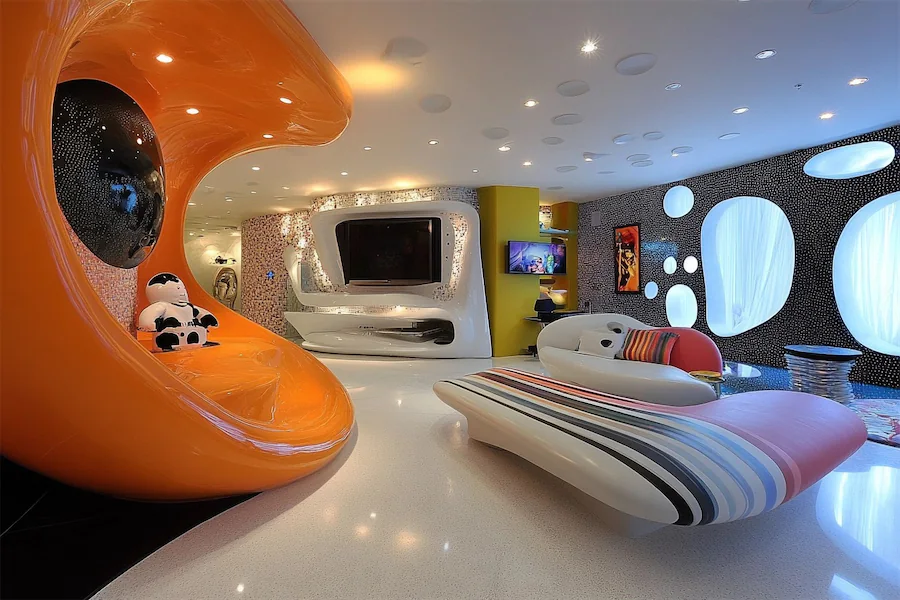Designing a Space Age entertainment room involves embracing the futuristic aesthetics inspired by the mid-20th-century fascination with space exploration. Here’s a comprehensive guide to achieving this distinctive style:
Introduction to Space Age Entertainment Rooms
The Space Age design movement emerged during the 1960s, reflecting society’s enthusiasm for space travel and futuristic technology. In an entertainment room, this style incorporates sleek lines, innovative materials, and a minimalist approach to create a cutting-edge environment.
History and Origins of Space Age Design
Space Age design originated in the late 1950s and 1960s, influenced by the Space Race and advancements in technology. This period saw the creation of furniture and interiors that embodied futuristic concepts, utilizing new materials like plastic and fiberglass to achieve unconventional shapes and forms.
Key Features of Space Age Entertainment Rooms
- Futuristic Furniture: Incorporate pieces with smooth, curved lines and innovative shapes, such as pod chairs or modular sofas, to evoke a sense of futurism.
- Monochromatic Color Schemes: Utilize a palette dominated by whites, grays, and blacks, often accented with bold colors like red or blue, to create a sleek and modern atmosphere.
- Innovative Materials: Employ materials like molded plastic, fiberglass, and metal to achieve the distinctive forms associated with Space Age design.
- Advanced Technology Integration: Seamlessly incorporate state-of-the-art entertainment systems, ensuring they complement the room’s futuristic aesthetic.
- Ambient Lighting: Use LED lighting, including strip lights and color-changing options, to enhance the room’s ambiance and highlight architectural features.
Applications of Space Age Style in Entertainment Rooms
- Seating Arrangements: Opt for iconic designs like the Eero Aarnio Ball Chair or the Verner Panton S Chair to provide both comfort and a futuristic appeal.
- Entertainment Centers: Select sleek, minimalist consoles to house modern entertainment equipment, maintaining the room’s streamlined appearance.
- Decorative Elements: Incorporate space-themed artwork, starburst wall clocks, or Sputnik chandeliers to reinforce the Space Age theme.
- Wall and Floor Treatments: Consider using metallic wallpapers or high-gloss finishes for walls, and polished concrete or epoxy flooring to enhance the futuristic vibe.
Considerations When Designing a Space Age Entertainment Room
- Balance Between Aesthetics and Comfort: While the design should be visually striking, ensure that furniture and layouts provide comfort for users.
- Avoiding Over-Theming: Incorporate Space Age elements thoughtfully to prevent the room from feeling like a set piece; subtlety can enhance sophistication.
- Personalization: Add personal touches that reflect your interests, such as vintage space memorabilia or custom artwork, to make the space uniquely yours.
Conclusion
A Space Age entertainment room offers a unique blend of retro-futuristic design and modern functionality. By focusing on futuristic furniture, innovative materials, and advanced technology integration, you can create a space that captures the excitement of the Space Age era while serving contemporary entertainment needs.
